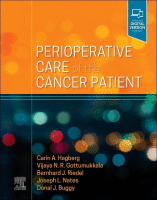Physical Address
304 North Cardinal St.
Dorchester Center, MA 02124

Pediatric patients undergoing treatment for cancer may require intensive care at any time during their diagnostic and treatment courses. Caring for pediatric cancer patients in the intensive care unit requires skilled, specially trained members of the medical team to provide…

Introduction Pain is a common and troubling symptom among pediatric cancer patients in both the inpatient and outpatient settings. , In this chapter we will provide a comprehensive overview of chronic pain and its management in pediatric cancer patients. We…

Introduction Cancer is the leading cause of disease-related death in children in the United States. Despite the numerous advances in pediatric oncology, some children are diagnosed with terminal malignancies and many others will become terminal later in their cancer trajectory.…

Introduction Nonoperating room anesthesia (NORA) and anesthesia in the nontheatre environment (ANTE), as the names suggest, provide anesthesia services at locations outside of the safe confines of the operating room. Anesthesia services are being requested at a multitude of locations…

Introduction/Overview The most common cancers in the pediatric population are acute leukemia, central nervous system (CNS) tumors, nephroblastoma, neuroblastoma, lymphoma, and sarcoma (see Chapter 45 ). The most common surgeries performed in pediatric patients with cancer are for central access…

Anesthetic Management of the Child with an Anterior Mediastinal Mass Mediastinal masses may arise from structures normally located in the mediastinum, from those that pass through the mediastinum during development, or from metastatic disease that arises from tumors elsewhere in…

Introduction Childhood cancers make up less than 1% of all newly diagnosed cancers each year. However, with increasing survival rates, an increasing number of pediatric patients will present for surgery and/or procedures related to their cancer diagnosis. Many of these…

Introduction The incidence of childhood cancer has been steadily increasing over the last few decades, from approximately 13 per 100,000 in 1975 to over 17 per 100,000 in 2005. While pediatric malignancies account for only 1% of all cancers diagnosed…

Introduction From the time that we take our first breath, there is one thing that is inevitable and that is death. The journey from birth to death defines life, and how well it is spent defines its quality. To ensure…

Rehabilitation Interventions in Patients With Cancer Introduction For patients with a broad range of serious life-threatening illness, loss of function and independence is a common struggle and a significant contributor to diminished quality of life. Among the factors that can…